Interactive Sound Propagation in Dynamic Scenes Using Frustum Tracing
Christian Lauterbach,
Anish Chandak,
Micah Taylor,
Zhimin Ren
and
Dinesh Manocha
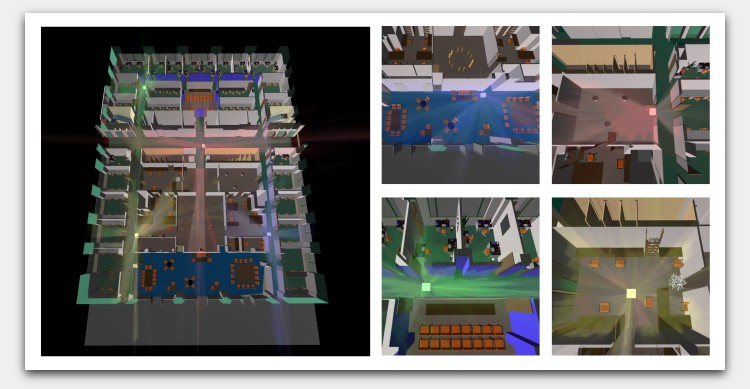 Interactive Sound Propagation: We perform interactive sound propagation inside Soda Hall model (1.5 million triangles).
Abstract
Interactive Sound Propagation: We perform interactive sound propagation inside Soda Hall model (1.5 million triangles).
Abstract
We present a new approach for simulating real-time sound propagation in complex, virtual scenes with dynamic sources and objects. Our approach combines the efficiency of interactive ray tracing with the accuracy of tracing a volumetric representation. We use a foursided convex frustum and perform clipping and intersection tests using ray packet tracing. A simple and efficient formulation is used to compute secondary frusta and perform hierarchical traversal. We demonstrate the performance of our algorithm in an interactive system for game-like environments and architectural models with tens or hundreds of thousands of triangles. Our algorithm can simulate and render sounds at interactive rates on a high-end PC.
AD-Frustum: Adaptive Frustum Tracing for Interactive Sound Propagation
Anish Chandak, Christian Lauterbach, Micah Taylor, Zhimin Ren, Dinesh Manocha
IEEE Visualization 2008
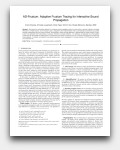
We present an interactive algorithm to compute sound propagation paths for transmission, specular refection and edge diffraction in complex scenes. Our formulation uses an adaptive frustum representation that is automatically sub-divided to accurately compute intersections with the scene primitives. We describe a simple and fast algorithm to approximate the visible surface for each frustum and generate new frusta based on specular refection and edge diffraction. Our approach is applicable to all triangulated models and we demonstrate its performance on architectural and outdoor models with tens or hundreds of thousands of triangles and moving objects. In practice, our algorithm can perform geometric sound propagation in complex scenes at 4-20 frames per second on a multi-core PC.
Adaptive Sampling for Frustum-based Sound Propagation in Complex and Dynamic Environments
Christian Lauterbach, Anish Chandak, and Dinesh Manocha
19th International Congress on Acoustics, 2007
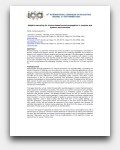
Frustum tracing is a geometric method that allows to perform sound propagation simulation in general complex and dynamic scenes. We describe the underlying algorithm and analyze its behavior with regard to different sampling and scene parameters. We also present an extension of the basic technique that allows to adaptively change the sampling with regard to local geometric complexity and show that this yields the same quality as uniform high sampling at much lower simulation time. We demonstrate our results in an interactive system for intended for virtual environments and prototyping purposes running in real-time on a current high-end PC.
Interactive Sound Propagation in Dynamic Scenes Using Frustum Tracing
Christian Lauterbach, Anish Chandak, and Dinesh Manocha
IEEE Visualization 2007
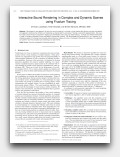
We present a new approach for real-time sound rendering in complex, virtual scenes with dynamic sources and objects. Our approach combines the effenciency of interactive ray tracing with the accuracy of tracing a volumetric representation. We use a four-sided convex frustum and perform clipping and intersection tests using ray packet tracing. A simple and effencient formulation is used to compute secondary frusta and perform hierarchical traversal. We demonstrate the performance of our algorithm in an interactive system for complex environments and architectural models with tens or hundreds of thousands of triangles. Our algorithm can perform real-time simulation and rendering on a high-end PC.
These results were generated using Adaptive Ray-Frustum Tracing approach. The benchmarks were run on an Intel Xeon System with a total of 8 cores. 7 cores were used for sound propagation simulation and 1 core for visual and audio rendering.
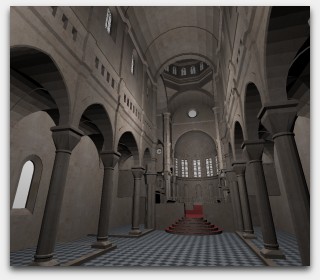 download 13mb
download 13mb
An interior scene with 80K triangles. The scene has moving source and listener. Update rates were 2 frames per second while simulating 4 reflections.

download 24mb
This scene features a detailed city environment with 80K triangles. In addition, there are several moving vehicles which are considered by the simulation. Tests achieved up to 5 frames per second with 4 orders of reflections + diffraction.
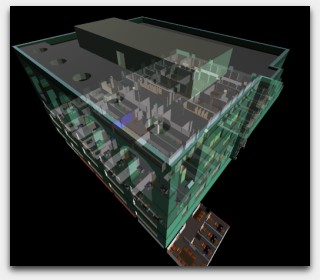
download 4mb
Simulation of the very large Soda Hall model with 1.5 million triangles. In this demo, the size of a room is dynamically modified. Due to the complexity of the scene, 3 frames per second were achieved on our system when rendering 4 orders of reflection + diffraction.
These results demonstrate the system as it was in 2007. All benchmarks were run on an Intel Core 2 Duo system at 3.0 GHz with a total of 4 cores. Our sound simulation runs asynchronously to the rendering thread and can be executed in parallel on the other three threads to exploit parallelism. As future CPUs will offer more cores, the performance of our sound propagation algorithm can therefore improve accordingly. Results are shown both for using just one thread and using all three threads.

download 19mb
This open low occlusionn scenario has 9K triangles and has dynamic obstacles. Frame rates up to 4 frames per second were achieved on our system with up to 6 reflections.
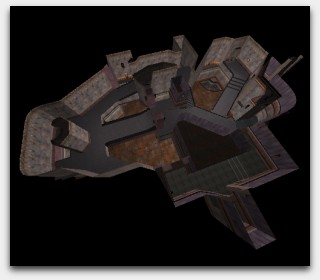
download 35mb
A typical game-like environment of 12k triangles. The scene has moving sources and listener. Frame rates up to 3.3 frames per second were achieved on our system with up to 5 reflections.
Impulse Response Graphs

The Impulse Responses (IRs) demonstrating the accuracy of our approach and comparing it with ray tracing techniques. Ray tracing methods could achieve speed performances similar to our algorithm, but not without severe aliasing, as they are not volumetric.




 download 13mb
download 13mb



